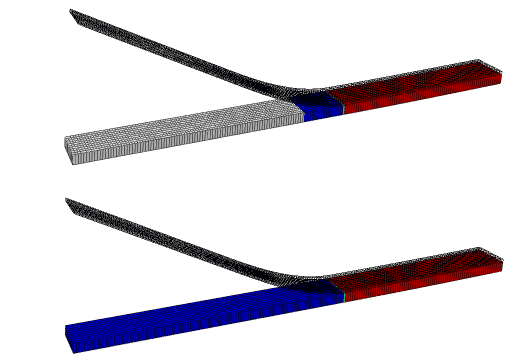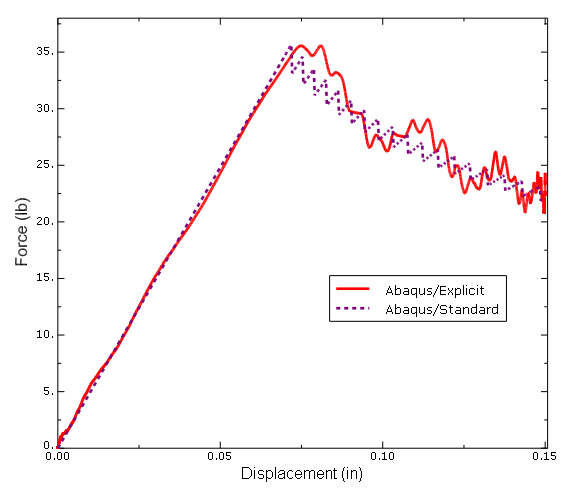Application description
The example examines the debonding behavior of a single leg bending specimen and compares the simulation results with the results of the analysis performed using the VCCT-based fracture interface elements discussed in Mabson (2003). Damping is also used in a two-dimensional model to demonstrate how it can stabilize the crack growth.
The same model is analyzed using the fatigue crack growth criterion to assess the fatigue life when the model is subjected to sub-critical cyclic loading. The onset and delamination growth are characterized using the Paris law, which relates the relative fracture energy release rate to the crack growth rate. The fracture energy release rate at the crack tip is calculated based on the VCCT technique. The results from Abaqus are compared with those predicted by the theory in Davidson (1995).
Boundary conditions and loading
A displacement is applied on the top beam at the location shown in Figure 1 for the two-dimensional model and in Figure 2 for the three-dimensional model. The displacement results in a mixture of opening (mode I) and shearing (mode II) modes. The maximum displacements are set equal to 0.32 in (8.13 mm) in the two-dimensional model and 0.15 in (3.81 mm) in the three-dimensional model for the monotonic loading cases. In the fatigue crack growth analyses, cyclic displacement loadings with peak values of 0.12 in (3.05 mm) in the two-dimensional model and 0.035 in (0.89 mm) in the three-dimensional model are specified.











